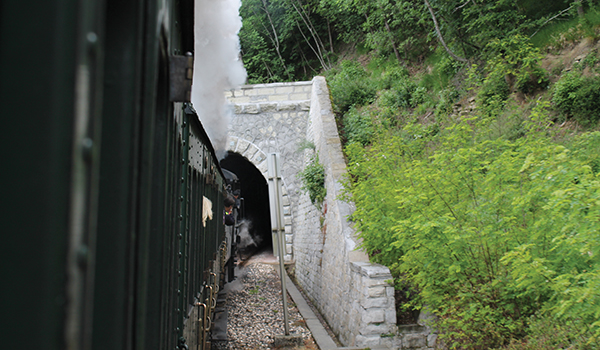There are many ways to see Italy, but surely one of the most unique has to be by steam train.
Mark Nicholls enjoys a nostalgic steam train tour across the Apennines from Rimini to Florence, then to Siena, Pisa – and Pistoia, the home of Italian steam.
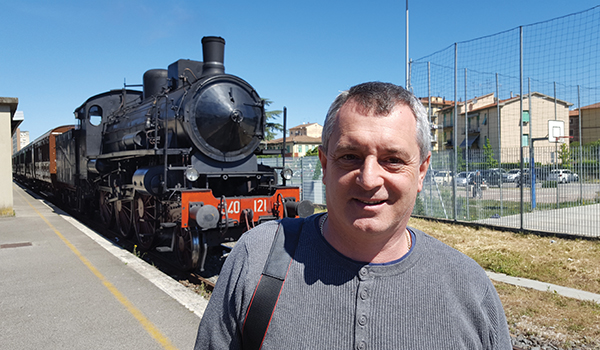
The air dances, black smoke drifting on the breeze from the powerful steam locomotive standing at the far end of platform one. Its presence at Siena railway station teases all our senses; the odour of burning coal, a gritty flavour you can almost taste, the reassuring hiss of pistons, and the warmth from the boiler, all fuelling anticipation, nostalgia and excitement.
Built in 1910, Locomotive 741 is today heading up four beautifully restored 1930s third-class coaches, their varnished seats, curtained windows, neat luggage racks and old engraved prints perfectly illustrating the vintage. As we board for our ride through Tuscany, I can’t help wondering what stories these carriages might have heard regaled on their journeys over the decades.
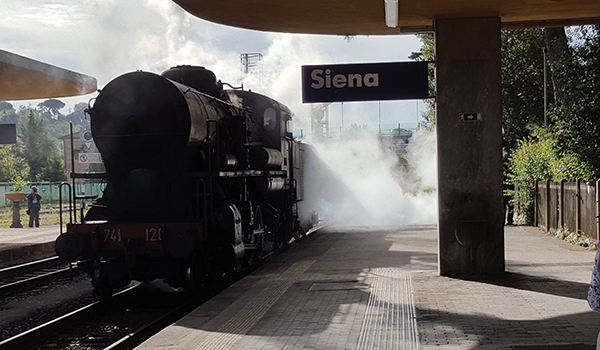
The piercing shrill of a train whistle signals the train’s imminent departure; ears prick, the guard flutters a green flag and a huff of smoke sees us ease out of Siena and head off into the Tuscan landscape. We are on a week-long steam safari of Tuscany, with the latest stretch taking us along the national rail network to Asciano, where we peel off onto a single track that has been out of scheduled service since 1994 but is now a well-known route for heritage charters. Bound for Monte Antico, the powerful 2-8-0 locomotive, with its unique side-stack chimney, dashes through isolated, near-forgotten stations, up a gradient to the summit, where we pause, look down on a steep gorge and proceed.
This section of track also includes the opportunity for me to ride the footplate. As the firebox doors slide open and the fireman heaves shovels of coal into the boiler, I feel the blast of heat as we speed on through the lonely, lovely Tuscan countryside, passing through Monte Amiato and Sant’Angelo-Cinigiano before drawing into Monte Antico.
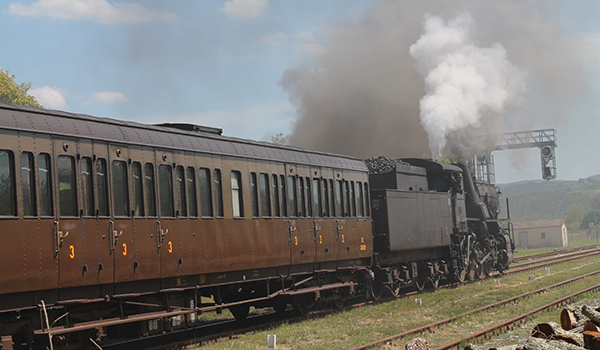
Here, the 741 takes on water and then powers back to Torrenieri-Montalcino for lunch – five courses and wine in a country restaurant close to the station. Then, in the late afternoon, like a horse that knows it is on the home leg, the engine races back to Siena.
Rimini to Florence
Over the mountains to tuscany
The train was chartered by the Norfolk-based Railway Touring Company for our seven-day excursion, which had started in Rimini, in Emilia-Romagna, before sweeping us westwards to Florence, Siena and then to Pisa. It is a journey that combines the wonderful Tuscan landscape with the region’s great cities and, of course, the opportunity to travel on steam locomotives through scenic, off-the-beaten-track countryside whilst enjoying local cuisine at small station halts.
The Rimini-Florence stretch, a couple of days earlier, had proven a magnificent introduction to our Italian steam odyssey. From the moment we first stepped onto the platform the distinct aroma of steam traction has been our constant companion. At Rimini, the steam engine reversed deep green coaches into platform four, then posed dutifully for photographs before its passengers boarded. Its carriage doors shut with heavy ratchet clicks and we settled into our seats.
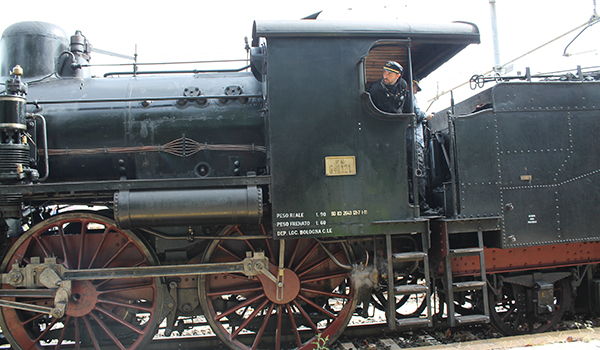
We waited patiently for a mainline express to clear the line before the hefty black steed pulled away, billowing black smoke and steam. The loco, an Italian Class 640 2-6-0, which would have been accustomed to fast passenger haulage in its heyday, made easy work of the carriages and we were soon racing along the mainline through open countryside at 60mph. Outside the windows, strawberry pickers sat on boxes picking fruit while further away, olive trees lined slopes. While not exactly a prancing horse, the loco had settled into a steady beat as we watched the views flash past.
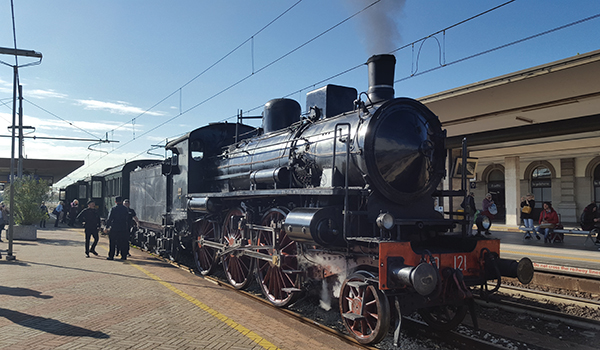
At Cesena the brakes shriek and the couplings clank as we slow and then accelerate again towards Faenza. Poppies line the sides of the tracks, homesteads punctuate the land, vines appear on slopes and the terrain rises with small villages and hilltop churches. At Faenza we branch off the mainline onto the Faentina route to Florence; here we ride alongside a departing mainline express, with the two engines exchanging toots and whistles as they pass.
The single track arcs through hillier country, the rails enclosed by trees and the land is lined with olives and vines fed by turquoise blue irrigation lagoons. The engine driver draws frequently on the whistle as we cross roads and paths towards Brisighella. Here, our train pauses on a loop to let the oncoming passenger service pass but also gives us time to explore the 16th-century church with its atmospheric cloisters and quiet interior, pick up a coffee and board for the next leg to Marradi.
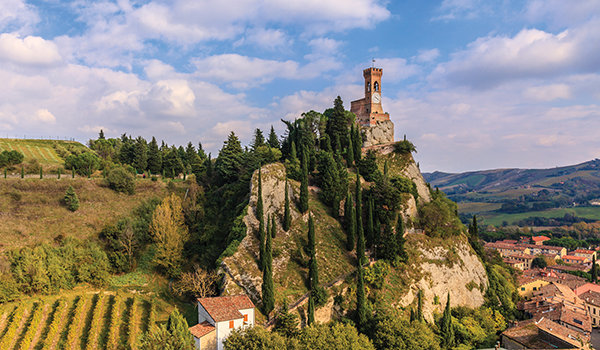
As soon as we leave, the tone of the engine changes in line with the terrain. We are climbing; climbing relentlessly, crossing a gorge with fast flowing water below, billowing smoke under a red brick bridge and steaming through cuttings as the gradient grows steeper.
On and on the loco pants, not a thoroughbred charging along the mainline now, but a workhorse on an ancient but steep line hewn through the tough countryside between Rimini and Florence.
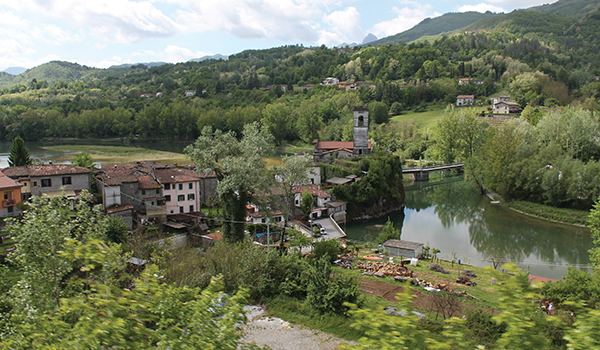
The Faenza-Florence line was established in 1839 by Grand Duke Leopold II of Tuscany to link Italy’s east and west coasts in Romagna and Tuscany via the Apennines. It remains a stunning feat of engineering with numerous tunnels, viaducts and cuttings set into rugged landscape. As we cross into Tuscany, Marradi looms into view, a pale yellow station where our loco refreshes with water while we replenish with lunch (bruschetta, pasta, grilled meats and panna cotta).
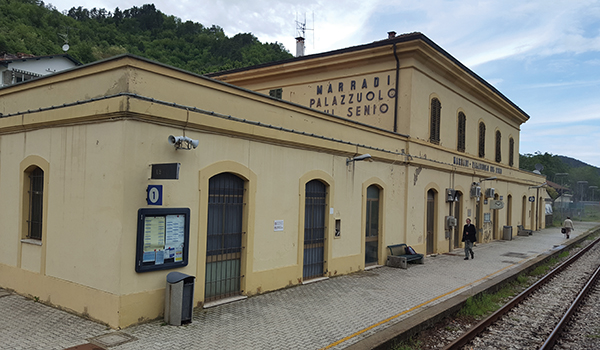
Still three hours from our destination, the trains labour continues: heavy work up inclines, thick steam and smoke through tunnels, and now a slower pace. It is a reminder that while we may romanticise about the golden age of steam, these engines were – and are – heavy, dirty, industrial beasts. But that is part of the adventure. Suddenly, the wheels run free and we gain momentum as we broach a summit. At the next few halts, passengers on regular services snap us with their mobile phones and wave enthusiastically. Being on a steam train always seems to turn a passenger into a celebrity, wherever you are in the world!
At Florence we transfer to our hotel and have the following day to explore the Tuscan capital with a guided tour of the Duomo, Giotto’s Tower, the Baptistery, the Ponte Vecchio, the San Lorenzo Markets, the Church of Santa Croce, the Uffizi Gallery and the Galleria dell’Accademia.
Florence to Siena
And a detour to san Gimignano
On the morning after our day in Florence, our 640 is released by the guard’s whistle to canter away to Empoli on the branch line towards Siena. In the fields, vines are ripening, fruit trees have shed their blossom and elsewhere other acres hold plants that within a few months will shine with sunflowers. Today, though, they are still just green shoots.
Open carriage windows let in the whiff of the ever-present steam, as the incessant beat of pistons powering drive rods and six-foot wheels goes on. Soon, we are at Poggibonsi to visit the citadel of San Gimignano, a stopping off point on the Via Francigena for pilgrims on their way to Rome. This is a 14th-century fortified village of extraordinary towers – I’m told there were once more than 70. Today, 14 of the impressive structures remain, looking out across wonderful Tuscany.
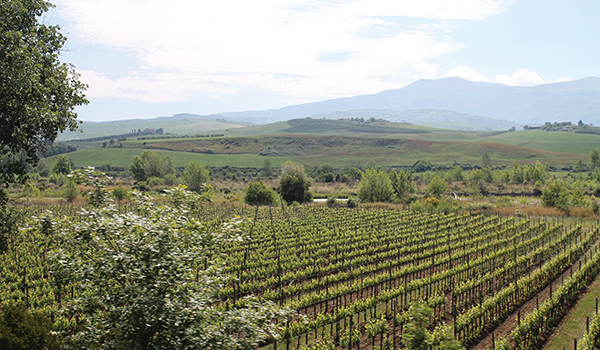
From the highest, Torre Grossa, the panorama takes my breath away. Looking down on the moss-covered, amber-red roof tiles of the town, I view the other towers below and then cast my eyes north, south, east and west, seeing in each direction for mile after mile after mile. The view is mesmerising.
San Gimignano has many narrow alleys, squares, churches, restaurants and bars – and something of a gelato turf war with various outlets claiming to be the best in the world, world champion titleholders, or simply the oldest. I opt for a double cone of hazelnut and mango ice cream – whether it is the best in the world or not, it certainly hits the spot.
In Siena we have time to enjoy the red-brick city, wander around the Piazza del Campo – which hosts the famous palio horse race twice a year, on July 2 and August 16 – and climb the 400 steps of the Torre del Mangia for superb views. Passages fan off the square, one leading to the Duomo with its impressive façade and black and white striped interiors and treasures within.
Siena to Pisa
And a tour of tuscany
What is so appealing about the Steam in Tuscany tour is the number of different facets it offers. There is time to explore the famous cities we pass through, to view the landscape between them from the carriage windows, to dine in country restaurants at small halts, and above all to have the thrill of travelling on steam-hauled trains.
But as well as travelling on the trains, you will also travel by road to see some of the cultural history of steam in this part of the world. Departing en route, eventually, for Pisa, we detour first to Pistoia, the home engine shed of the locomotives that have been hauling us around.
Pistoia is the beating heart of Italy’s heritage steam renaissance and has the support of Ferrovie dello Stato (FS), with the state railway company having a dedicated department overseeing steam services and provides crews and maintenance of the locomotives. Flavio Castellan, who escorts the Railway Touring Company trip, explains that excursions are becoming more popular across Italy, notably in Tuscany but also in Sardinia and the north of the country.
“Lines that are no longer used for regular service trains have come back into use for tourists and special excursions, such as the route from Siena to Monte Antico,” he tells me. “The support of FS has been key to the programme. Having a special train crews is very important and means we do not have to rely on volunteers. At Pistoia there is the workshop for the locomotives where staff repair, restore and drive these trains, and with this support we can look at running more steam trains into more parts of Italy.”
The final rail journey sees us depart Lucca aboard one of the last surviving 2-6-2 express passenger steam locomotives from the Pistoia engine shed and follow the picturesque line through the Tuscan Hills to the Mediterranean port of La Spezia.
The track negotiates viaducts, ancient bridges, gorges; sweeps through cuttings sided by rocky hillsides and dives into long tunnels. This area is one of the rainiest parts of Italy and the rain keeps the rivers full and the landscape green and fertile. But today, the sun is shining. As we head higher, the terrain becomes steeper, criss-crossing the Sergio River, which is famous for trout fishing. This is a truly beautiful part of Italy, with rocky outcrops, small villages clinging to the hillside, and halts such as Piazza al Serchio, where we have lunch.
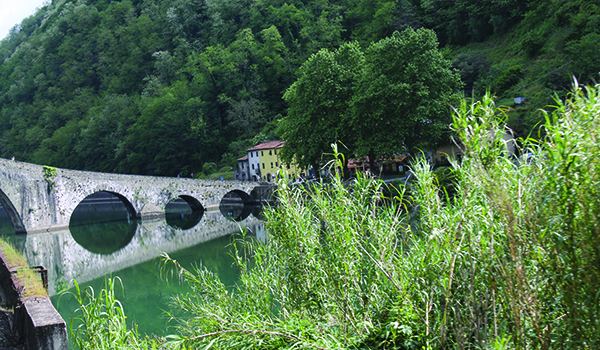
Onwards we plunge into a long, gloomy tunnel, flashing through more small stations and into Liguria. At Aulla, we switch directions back onto the mainline and then roll into La Spezia Centrale soon after. Late afternoon sees a fast return to Pisa, nudging 70mph, with the locomotive delivering a spectacularly powerful finale to a week-long Steam Tour of Tuscany, a spectacular steam-hauled journey covering hundreds of miles from one side of Italy to the other with an irresistible whiff of nostalgia to it.
